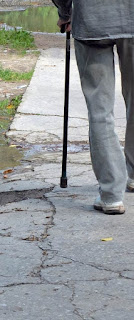 It seems we are not the only ones resettling from Dorset to East Anglia. It was announced this week that colonies of Large Marsh Grasshoppers are now breeding in some selected Norfolk wetlands.
It seems we are not the only ones resettling from Dorset to East Anglia. It was announced this week that colonies of Large Marsh Grasshoppers are now breeding in some selected Norfolk wetlands.
 Until recently the main colonies of this insect were found in the New Forest and a few boggy parts of Dorset [including Ferndown's very own Slop Bog]
Until recently the main colonies of this insect were found in the New Forest and a few boggy parts of Dorset [including Ferndown's very own Slop Bog]
Volunteers from Citizen Zoo, a social enterprise group that promotes rewilding and social engagement are releasing 1000 insects in two secret locations this summer, in an attempt to increase their numbers, and revive this endangered species. They are calling it their Hop of Hope
These insects are amazingly beautiful. One tends to think of grasshoppers as just being bright green - but these have striking pink and yellow bodies
They were very common in East Anglia in times gone by - but now they are rather isolated in their Dorset/Hampshire breeding grounds, and unable to hop back to former strongholds. It is hoped this programme will strengthen the species again.
Over 2000 were released in Norfolk last summer, and this year their first wild offspring have emerged. The Large Marsh Grasshopper is the UK's largest grasshopper.
In Aesop's fable of "The Ant and The Grasshopper" he condemns the idle green creature who spends all summer making music, then dies in the cold winter, having failed to store food. The industrious ants however, have not ceased to work, and so are well provided when the weather turns. Aesop didn't understand the life cycle - it is around 11-12 months, and the eggs are laid in the autumn and remain dormant through the colder season, hatching as the weather warms up. But down the centuries the ant has been held up as an example of the virtues of hard work and diligence, as opposed to the sins of idleness and sloth. [which is ok, but I wish they would not be so diligent about finding their way into my kitchen!]
Well done to all those involved in this conservation project . Many of these 'Citizen Keepers' will be spending 6-8 weeks this summer collecting grass to feed to insects reared in a home vivarium. Far more insects survive this way than in the wild, and it is a good way to increase the numbers. I hope they will be as happy living in Norfolk as I am!


















































